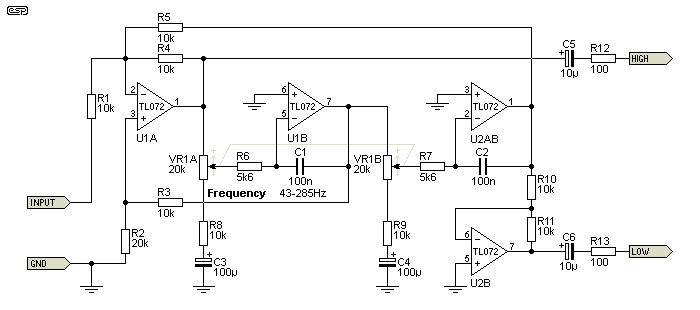Hi Friends,
I need to provide VGND to a certain amount of EQ filters (4) and need to anticipate how much current will they drag from a rail-splitter circuit.
The EQ circuit is a traditional variable state filter as follows: https://sound-au.com/articles/st-var-f2.gif
I need to power 4 of these simultaneously and the opamp in use is an AD712 –both for the rail-splitter and 4xPEQ. The AD712 consumes 5mA per opamp and can output up to 25mA per opamp. 4 PEQ circuits need 8x AD712 in total, which in theory consume 80mA all together, but I presume not all this current will be consumed by the VGND.
Can somebody predict how much current the VGND would actually consume? I'm trying to guess here which rail-splitter circuit to use and keep it minimal, before I can reach any board design. Working DC voltage is 12v (+6v/0v/-6v).
I need to provide VGND to a certain amount of EQ filters (4) and need to anticipate how much current will they drag from a rail-splitter circuit.
The EQ circuit is a traditional variable state filter as follows: https://sound-au.com/articles/st-var-f2.gif
I need to power 4 of these simultaneously and the opamp in use is an AD712 –both for the rail-splitter and 4xPEQ. The AD712 consumes 5mA per opamp and can output up to 25mA per opamp. 4 PEQ circuits need 8x AD712 in total, which in theory consume 80mA all together, but I presume not all this current will be consumed by the VGND.
Can somebody predict how much current the VGND would actually consume? I'm trying to guess here which rail-splitter circuit to use and keep it minimal, before I can reach any board design. Working DC voltage is 12v (+6v/0v/-6v).






